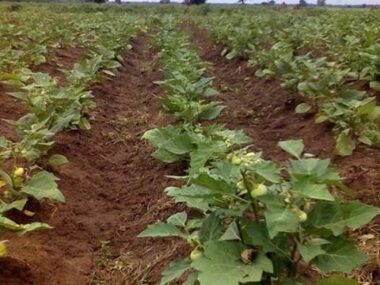Biodiversity is the foundation of life on Earth, and its importance in agricultural systems cannot be overstated. From soil health to pest control and resilience to climate change, biodiversity plays a crucial role in ensuring the sustainability and productivity of agricultural ecosystems. As the global population continues to grow, understanding and preserving biodiversity in agriculture is paramount for feeding the world while safeguarding the planet’s natural resources.
At its core, biodiversity refers to the vari
ety and variability of life forms within a given ecosystem. In agricultural contexts, this includes not only the diverse array of plant and animal species but also the genetic diversity within each species. Maintaining high levels of biodiversity in agricultural systems is essential for several reasons.

First and foremost, biodiversity is directly linked to soil health. Healthy soils teem with a multitude of organisms, including bacteria, fungi, earthworms, and other microorganisms, all of which play vital roles in nutrient cycling, soil structure formation, and pest regulation. A diverse range of plant species in agroecosystems promotes the proliferation of beneficial soil organisms, leading to improved soil fertility and resilience to erosion and degradation. Conversely, monoculture farming, which relies on cultivating a single crop over large areas, can deplete soil nutrients, increase susceptibility to pests and diseases, and degrade soil structure over time.
Furthermore, biodiversity enhances natural pest control in agricultural systems. In diverse ecosystems, a variety of predator-prey relationships and natural enemies of pests help regulate pest populations without the need for synthetic pesticides. For example, planting flowering crops alongside main crops can attract beneficial insects such as ladybugs, lacewings, and parasitic wasps, which prey on pest species. Additionally, maintaining hedgerows, field margins, and other natural habitats within agricultural landscapes provides refuge and nesting sites for beneficial insects, birds, and other wildlife that contribute to pest suppression.
Biodiversity also enhances the resilience of agricultural systems to climate change and other environmental stressors. Diverse crop varieties and livestock breeds have evolved under different environmental conditions, making them better adapted to withstand fluctuations in temperature, precipitation, and pest pressure. By cultivating a diverse range of crops and incorporating resilient indigenous varieties, farmers can hedge against the risks associated with climate variability and ensure food security in the face of changing environmental conditions.
Moreover, biodiversity in agricultural systems promotes ecosystem services that benefit both farmers and society as a whole. These services include pollination, water purification, carbon sequestration, and regulation of local climate patterns. Pollinators such as bees, butterflies, and birds play a crucial role in the reproduction of many food crops, contributing an estimated $235-$577 billion annually to global food production. Protecting and enhancing pollinator habitats within agricultural landscapes is therefore essential for maintaining crop yields and ensuring food security.
In addition to the ecological benefits, biodiversity in agriculture also has cultural, social, and economic significance. Indigenous and traditional farming practices often incorporate diverse cropping systems, heirloom varieties, and local knowledge passed down through generations. Preserving and promoting these diverse agricultural traditions not only conserves genetic resources but also fosters cultural identity, strengthens community resilience, and supports local economies.
Despite its importance, biodiversity in agriculture faces numerous threats, including habitat loss, land degradation, overexploitation of natural resources, pollution, and climate change. Intensive agricultural practices such as industrial monoculture farming, deforestation, and the excessive use of synthetic inputs have led to the loss of biodiversity and ecosystem degradation on a global scale. Urgent action is needed to reverse these trends and promote sustainable agricultural practices that prioritize biodiversity conservation.
Fortunately, there are numerous strategies and initiatives aimed at enhancing biodiversity in agricultural systems. Agroecology, for example, emphasizes the integration of ecological principles into farming practices to promote biodiversity, resilience, and sustainability. Agroforestry, cover cropping, crop rotation, and integrated pest management are just a few examples of agroecological practices that support biodiversity conservation while improving yields and farmer livelihoods.
Furthermore, policies and incentives that support biodiversity-friendly farming practices, such as agri-environmental schemes, organic certification, and payments for ecosystem services, can help incentivize farmers to adopt more sustainable land management practices. Investing in research and innovation to develop and disseminate biodiversity-enhancing technologies and practices is also essential for mainstreaming biodiversity conservation in agriculture.
In conclusion, biodiversity is a cornerstone of sustainable agriculture, providing a myriad of ecological, economic, and social benefits. From soil health and pest control to climate resilience and cultural heritage, biodiversity plays a critical role in shaping the productivity, resilience, and sustainability of agricultural systems. Protecting and enhancing biodiversity in agriculture is therefore essential for ensuring food security, conserving natural resources, and building resilient and equitable food systems for future generations.










